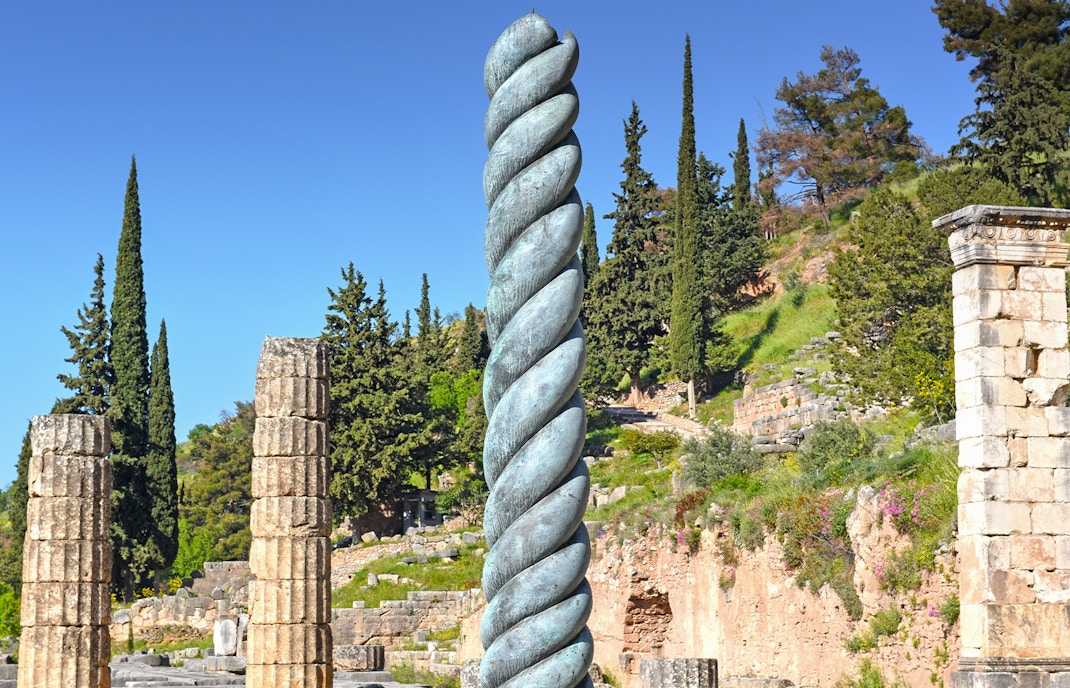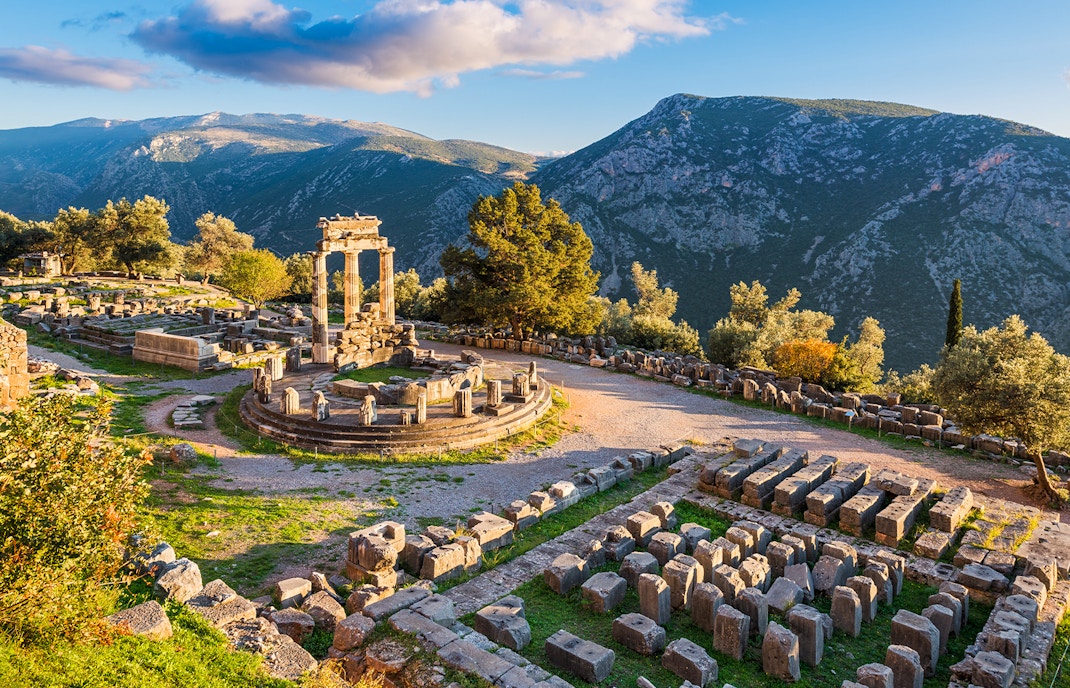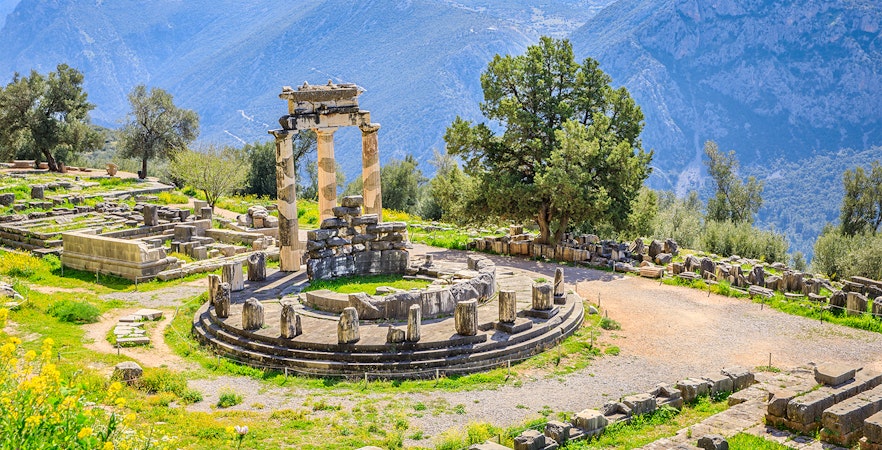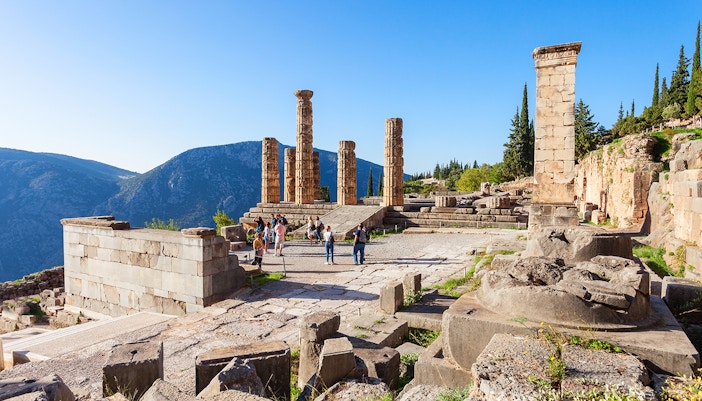Long before Apollo, Delphi was a sacred site dedicated to Gaia, the Earth Mother. According to myth, Apollo defeated the serpent Python to claim the sanctuary, symbolizing the shift from earth worship to the worship of light and reason. This legend laid the foundation for Delphi’s future as a bridge between the divine and the mortal.
.svg?auto=format&w=156&h=48&q=90&crop=faces&fit=crop)










